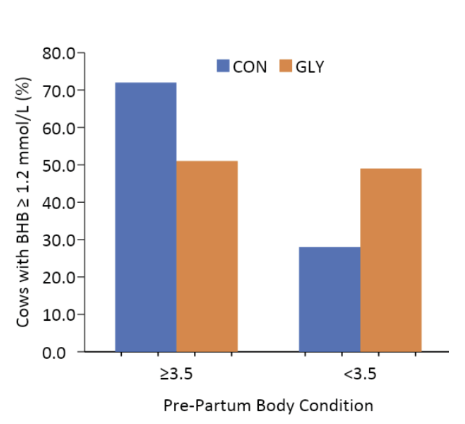By Clay McWilliams M.Sc.
Dairy Specialist
Grand Valley Fortifiers
Transition cow health and productivity has, and continues to be, a critical period for lactation performance. Optimizing cow productivity in early lactation can increase peak milk, improve lactation persistency, and reduce the risk of illness. The number one issue challenging early lactation cows is negative energy balance, which occurs when her energy demands exceed her energy intake. This is especially true for robot milked cows as they can be milked upwards of 4-6x per day, increasing her daily milk yield. Current strategies to reduce the impact of negative energy balance include: regular ketone testing, minimizing weight gain in the dry period, and increasing feed intake in early lactation. Producers have also found success in supplementing energy dense feed ingredients in early lactation.
Supplementing early lactation cows can be easily achieved in robot herds. It is important to discuss with your GVF Dairy Specialist how to design your feed table to target key animals. Precision feeding strategies have been implemented with great success across North America, where the type and quantity of robot feed delivered can be tailored based on age, stage of lactation, and milk yield. Producers have seen increases in milk yield, more visits per day, and fewer fetch cows by changing their feed table design. By specifically targeting early lactation cows, some studies have shown decreases in ketosis prevalence. This is especially important for robot cows as it has been reported that they are more likely to develop ketosis than conventionally milked cows.

Figure 1. Precent of Cows with a High BHB Based on Pre-Partum Body Condition Score
I recently completed a study as part of my Master’s thesis at the University of Guelph, analyzing over 400 cows on 5 commercial robot herds where we supplemented glycerol through the robot pellet from 1 to 21 DIM. This study ran from May 2022 to May 2023, where half the cows received glycerol and half the cows were on a control diet for the first 21 DIM. After 21 DIM all cows were fed the same robot pellet. From each cow, we measured their blood BHB levels, body condition, milking frequency, and milk yield up to 150 DIM. When looking at cows who were over-conditioned in the dry period, cows who did not receive glycerol in the first 21 DIM were 3.5x more likely to have sub-clinical ketosis (Figure 1).

Figure 2. Body Condition Score of Trial Cows Across the First 63 Days in Milk
We also found that cows who received glycerol for the first 21 DIM maintained condition better up to lactation peak. This indicates that cows receiving glycerol had an improved energy balance in early lactation (Figure 2). We then analyzed milking frequency and milk yield in two separate periods, the first was during glycerol supplementation (1 to 21 DIM) and the second was during the follow-up period (22 to 150 DIM). During the supplementation periods, cows receiving glycerol had 0.1 more milkings/d and produced 0.8 kg/d more milk than control cows. The improvement in milking behaviour and milk yield carried on into the follow-up period, where cows receiving glycerol had 0.1 more milkings/d and produced 1.5 kg/d more milk.
Overall, these results point to the benefits of glycerol supplementation in early lactation, which on robot herds can be achieved by manipulating feed tables to better support key stages of lactation. These results can be applied to all types of milking systems, as glycerol can be supplemented through a variety of dietary ingredients. To learn more about feeding glycerol and how it can fit into your current feeding program, please contact your Grand Valley Fortifiers Dairy Specialist or contact one of our nutritionists at Nutrition Direct.
This article was written for the Winter 2023 Central & Atlantic Dairy Grist. To read the whole Dairy Grist, click the button below.

